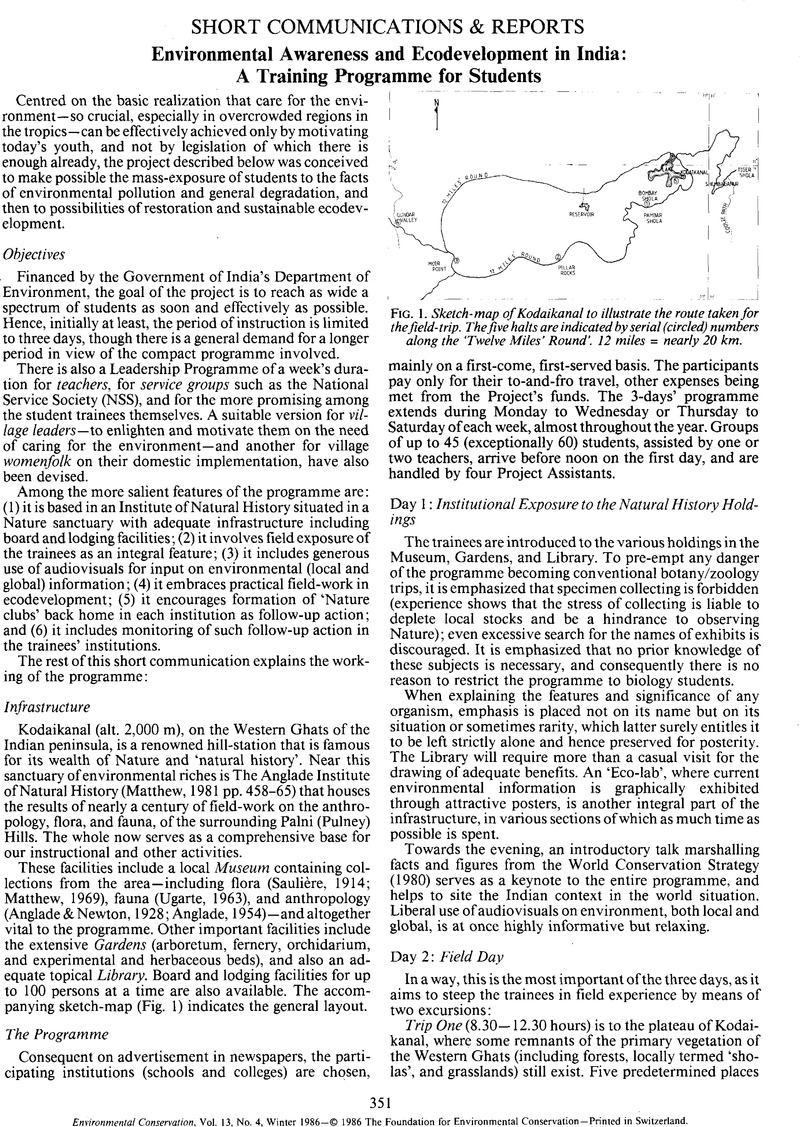No CrossRef data available.
Article contents
Environmental Awareness and Ecodevelopment in India: A Training Programme for Students
Published online by Cambridge University Press: 24 August 2009
Abstract
An abstract is not available for this content so a preview has been provided. Please use the Get access link above for information on how to access this content.

- Type
- Short Communications & Reports
- Information
- Copyright
- Copyright © Foundation for Environmental Conservation 1986
References
Anglade, A. (1954). Dolmens and Tombs of the Pulney Hills. Anthropological Society of Bombay, Bombay, India: 56 pp., illustr.Google Scholar
Anglade, A. & Newton, L.V. (1928). Dolmens of the Pulney Hills. Mem. Archaeol. Surv. India (No. 36), Calcutta, India: 12 pp., illustr.Google Scholar
Matthew, K.M. (1969). The exotic flora of Kodaikanal. Rec. Bot. Surv. India, 20(1), pp. 1–242.Google Scholar
Matthew, K.M. (1981). Materials for a Flora of the Tamilnadu Carnatic. The Rapinat Herbarium, St Joseph's College, Tiruchirapalli, India: x + 469 pp., illustr.Google Scholar
Matthew, K.M., Blasco, F. & Ignacimuthu, S. (1975). Biological changes at Kodaikanal, 1949–74. Trop. Ecology, 16, pp. 147–62, 7 figs.Google Scholar
Saulière, A. (1914). Plants from the Pulney Hills. St Joseph's Industrial School Press, Trichinopoly (Tiruchirapalli), India: 9 pp.Google Scholar
Ugarte, E. (1963). Museum of the Palnis. Sacred Heart College, Shembaganur, India: 18 pp.Google Scholar
World Conservation Strategy (WCS) (1980). The World Conservation Strategy: Living Resource Conservation for Sustainable Development. (IUCN-UNEP-WWF.) IUCN, Avenue du Mont-Blanc, 1196 Gland, Switzerland: vii + 43 pp. + maps.Google Scholar


